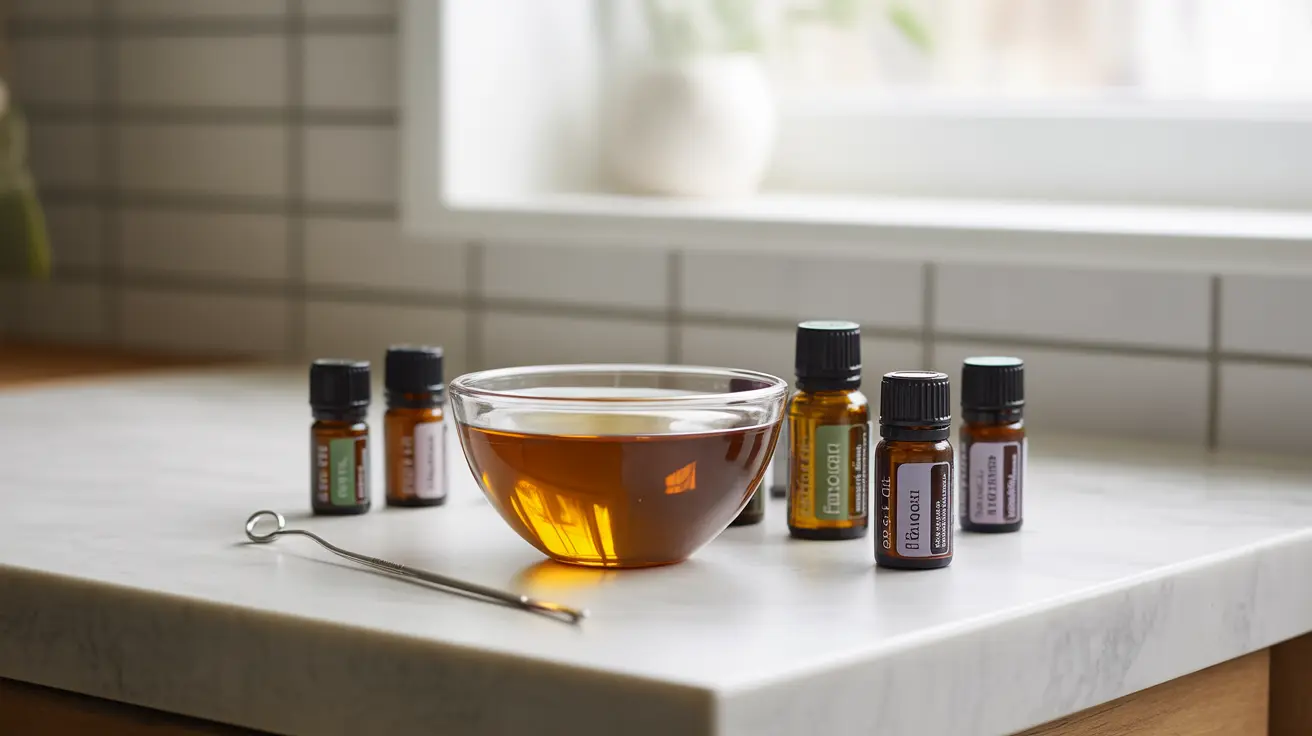Living with toenail fungus can be both frustrating and embarrassing, leading many people to seek natural treatment alternatives. Essential oils for toenail fungus have gained popularity as a potential solution, offering antifungal properties that may help combat this persistent condition. Understanding how to use these natural remedies effectively and safely is crucial for achieving the best possible results.
In this comprehensive guide, we'll explore the most effective essential oils for treating toenail fungus, proper application methods, and important safety considerations to keep in mind during treatment.
Most Effective Essential Oils for Toenail Fungus
Several essential oils have demonstrated promising antifungal properties that may help combat toenail fungus:
- Tea Tree Oil (Melaleuca alternifolia)
- Oregano Oil
- Lavender Oil
- Thyme Oil
- Clove Oil
Among these options, tea tree oil stands out as one of the most researched and widely used essential oils for fungal infections. Its natural antimicrobial properties make it particularly effective against various fungi, including those responsible for toenail infections.
Proper Application Methods and Safety Guidelines
To maximize the benefits of essential oils while minimizing potential risks, follow these important application guidelines:
- Always dilute essential oils with a carrier oil (such as coconut oil or jojoba oil)
- Use a 2-5% dilution ratio (12-30 drops of essential oil per ounce of carrier oil)
- Apply the mixture to clean, dry toenails twice daily
- Use a clean applicator or cotton swab for each application
- Allow the mixture to fully absorb before putting on socks or shoes
Creating an Effective Treatment Blend
For optimal results, consider creating a specialized treatment blend:
- 1 ounce carrier oil
- 15 drops tea tree oil
- 10 drops oregano oil
- 5 drops lavender oil
This combination provides multiple antifungal compounds while maintaining safe dilution levels for topical use.
Treatment Timeline and Expectations
When using essential oils for toenail fungus, patience is key. The treatment timeline typically involves:
- Initial visible improvements: 4-6 weeks
- Significant improvement: 2-3 months
- Complete nail renewal: 6-12 months
Consistency in application and proper nail care are crucial factors in treatment success. Continue treatment until the infected nail has completely grown out and been replaced by healthy tissue.
Safety Considerations and Precautions
While essential oils are natural remedies, they require careful handling:
- Always perform a patch test before full application
- Never apply undiluted essential oils directly to skin or nails
- Discontinue use if irritation occurs
- Consult a healthcare provider if you have sensitive skin or underlying health conditions
- Keep oils away from eyes and mucous membranes
- Store essential oils properly in dark, cool places
Frequently Asked Questions
Which essential oils are most effective for treating toenail fungus?
Tea tree oil, oregano oil, and lavender oil are among the most effective essential oils for treating toenail fungus. Tea tree oil, in particular, has strong scientific evidence supporting its antifungal properties. These oils work best when used consistently and properly diluted with a carrier oil.
How do you safely use essential oils for toenail fungus without irritating your skin?
Always dilute essential oils with a carrier oil using a 2-5% dilution ratio. Perform a patch test before full application, and never apply undiluted oils directly to the skin or nails. Use clean applicators and apply to thoroughly cleaned and dried toenails.
How long does it take to see results when using essential oils for toenail fungus?
Initial improvements may be visible within 4-6 weeks of consistent use. However, complete treatment can take 6-12 months, as the infected nail needs to fully grow out and be replaced by healthy tissue. Consistent application is crucial for success.
Are there any proven risks or side effects of using essential oils to treat toenail fungus?
The main risks include skin irritation, allergic reactions, and sensitivity to the oils. These risks can be minimized by proper dilution and careful application. Some people may experience temporary burning or tingling sensations, even with proper dilution.
Can you combine prescription antifungal medications with essential oils for better toenail fungus results?
While it's possible to combine treatments, always consult your healthcare provider before using essential oils alongside prescription medications. Some combinations might interact or reduce the effectiveness of prescribed treatments. Your doctor can help determine the safest and most effective treatment approach for your specific situation.




